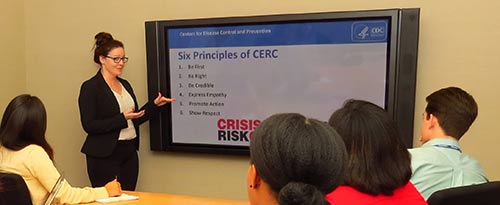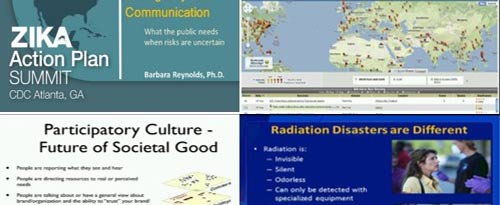Crisis & Emergency Risk Communication (CERC)

The right message at the right time from the right person can save lives. CDC’s Crisis and Emergency Risk Communication (CERC) draws from lessons learned during past public health emergencies and research in the fields of public health, psychology, and emergency risk communication. CDC’s CERC program provides trainings, tools, and resources to help health communicators, emergency responders, and leaders of organizations communicate effectively during emergencies. Please email cercrequest@cdc.gov with any questions or requests for trainings or materials.
The CERC program offers in-person and online trainings on Crisis and Emergency Risk Communication.
The CERC Manual describes core crisis and emergency risk communication principles and how they apply to each phase of a crisis. Tools are available to prepare communication plans or use during a crisis.
CERC Corners are articles based on content from CDC’s CERC Manual and are published biweekly in the CDC Emergency Partners’ Newsletter.
The CERC program offers archived presentations on specific CERC topics and how CERC applies in different emergencies.
Page last reviewed: January 23, 2018
Content source: Center for Preparedness and Response (CPR)



